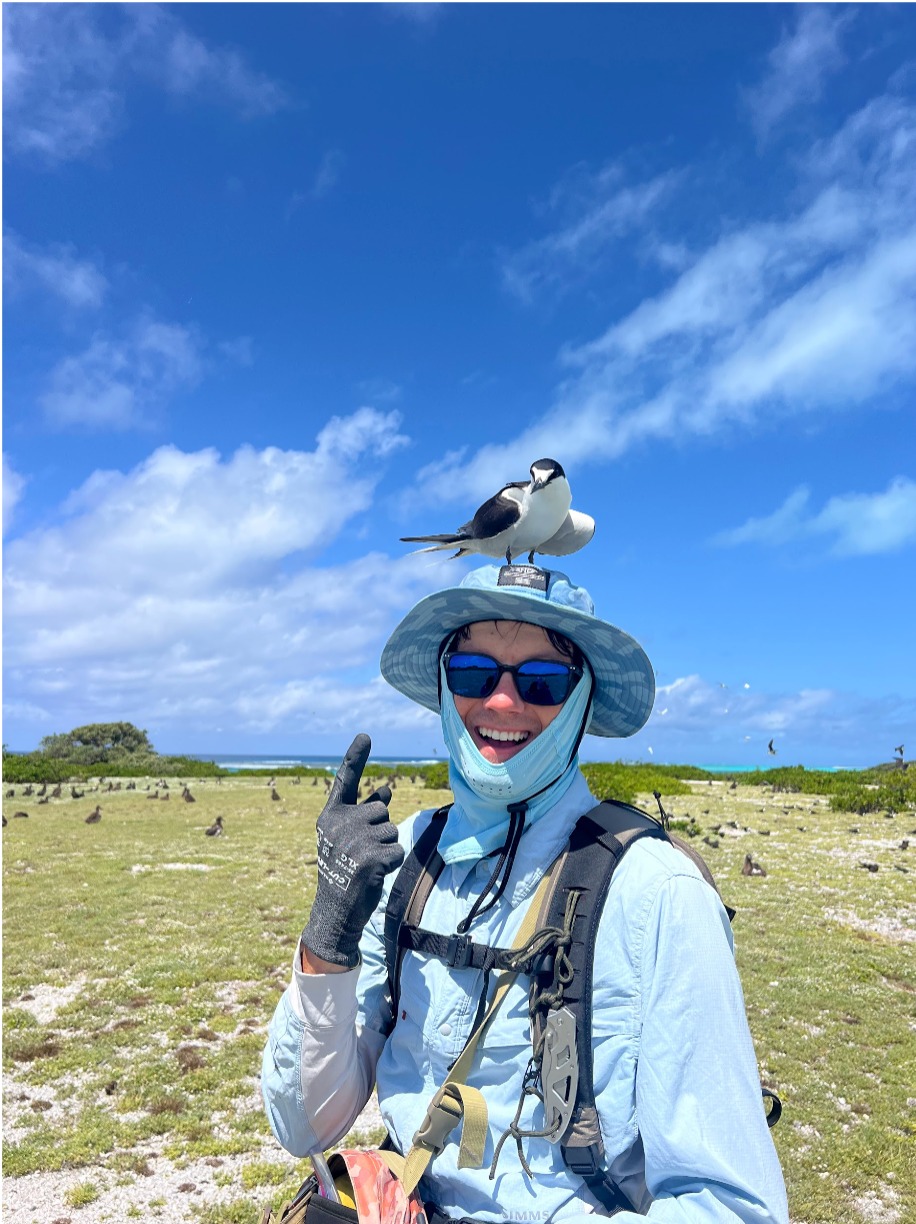June 1, 2025- Dwight’s first blog of the season!
I left Hōlanikū on May 14th, 2022 and I thought I would never have the opportunity to come back again. Leaving was bittersweet and Hōlanikū had taught me so much. Despite the hardships of living in a remote field camp and missing my friends and family back home, time and time again Hōlanikū provided warmth, care, and joy to myself and my fellow Hōlanikū family.
On May 20, 2025, I returned to Hōlanikū. The sea conditions coming into the lagoon were far different this time. Cold, windy, and choppy, these weren’t ideal conditions for boat operations but they weren’t terrible or dangerous either. With all that being said, it was still a beautiful day on Hōlanikū. Every day is.
As we neared the shore I took a moment to gaze at the long beach dotted with mōlī and ka’upu chicks (Laysan albatross and Black-footed albatross) as well as some ‘īlioholikauaua (Hawaiian Monk Seal). The naupaka was taller and denser than I last time I was here. The skies danced above me. I cried silent tears as the boat neared the shore. I was in complete disbelief and awe of Hōlanikū and I was beyond ecstatic to be in her presence again.
The Winter 2024 crew stood on the beach waiting for our arrival. This day marked the end of their season after caring for and being under the care of Hōlanikū after 7 straight months. After a brief greeting we lined up to start unloading the 1st run of supplies onto the beach for my crew’s 12-month long season. We then exchanged oli and did a quick photo of our crews together before resuming a long day of moving supplies.
My heart wrenched for the winter crew, knowing they had to say farewell to Hōlanikū and her other inhabitants. After the third run of supplies to shore the ship departed for Kuaihelani (Midway Atoll) with the winter crew safely aboard.
The next two days for our crew was arduous work as we hauled nearly 500 5-gallon buckets from the beach to camp. I was too busy and preoccupied to take in where I was during these two days.
On the evening of May 22nd, I got a quick break and spent this time alone on the top of the pier at sunset. I gazed across the vast lagoon.
Tears rolled down my face as I watched manu (birds) dance effortlessly in the sky. The mōlī and ka’upu soared gracefully around me with their wingtips grazing the surface of the lagoon. A Manu-o-kū (White tern) flew feet in front of me with a beak full of tiny fish. I honed in on so many others and cried tears as they took advantage of the strong winds. I was gifted the sight of so more manu during this sunset: ‘ua’u kani, ‘ā, noio, ‘ewa’ewa, and ‘iwa (Wedge-tailed shearwater, Brown booby & Red-footed booby, Sooty tern, and Great Frigate bird).Off to my right, two ‘īlioholikauaua, a mother and pup, nuzzle together on the shoreline. With the sun falling behind an overcast sky, I returned to camp before it got too dark.
We’re now starting our second full week on Hōlanikū. Last week we began our transects, searching for and removing invasive flora that disrupt seabird colony habitat. With the abundant naupaka and alena, it’s far more challenging to spot the invasives that still pose a great threat to this habitat. Hōlanikū will present countless obstacles for our team during this year-long field camp and will push us to our limits but will provide us with an indescribable experience.
On another note, I’m pleased to announce that my co-lead, Nick Minnich, was voted best chef of the month. His jackfruit tacos were voted the best meal of the month. Here is a photo of him as well as some other goodies from our first two weeks.
Mahalo,
Dwight
